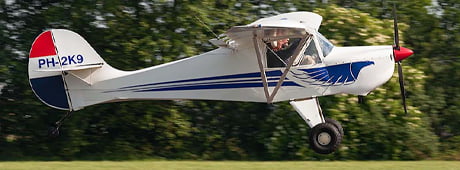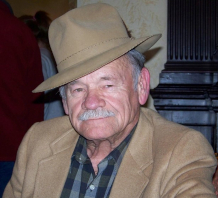No products in the cart.
Kit Plane Mecca

Inside an Idaho-Made Industry
By John M. Larsen
In the fall of 1989, I was a freelance writer who made a proposition to a Caldwell company called Avid Aircraft. I said if the company would give me a discount price on their flyer kit, I’d write a series of articles for Kitplanes Magazine about how to build the kit from the plans. I had worked as an engineer for Boeing in Seattle and my first solo flight as a private pilot had been back in 1980, so I was ready and willing to take on the building of the Avid. My proposal was accepted.
Nowadays, a Homedale company called Kitfox is the nation’s number one producer of folding-wing kit planes. How that happened is a tale of innovation that goes back to before my own involvement with kit planes, which eventually extended to writing manuals and even into design.
The story of how these planes were invented in Idaho began in the early 1980s, with a successful equipment dealer in Homedale named Joe Terteling who had a collection of vintage airplanes. The aircraft and power-plant mechanic for them was Dean Wilson [for a profile of Dean and his numerous aircraft designs, see “When Dreams Take Wing,” IDAHO magazine, June 2002]. Dean had designed a crop duster called the Eagle, which created a sensation at the Oshkosh Fly-In in the late-1970s. He had gotten help on its dusting distribution system from Dan Denney, another Terteling employee. At an annual Experimental Aircraft Association (EAA) meeting in Wisconsin, Dan realized there was a surge of public interest in ultralight planes.
The two men began working on a folding-wing design for an ultralight. Dean drew on his experience with the Terteling collection and, with Dan’s assistance, Dean designed what he named the Avid Flyer. It was too heavy to be registered as a regular ultralight, so it was licensed under the experimental aircraft category. At the 1983 EAA Fly-In in Wisconsin, Dean won the Best New Design Award for the Avid Flyer.
A kit plane simply means the aircraft can be purchased as a kit, including all the parts and pieces for the owner to build it with a minimum of tools and space. The folding wing is important, because the plane folds down to a width of eight feet, enabling it to be hauled on a trailer on public roads. In contrast, when a fixed-wing airplane is transported on a trailer, the wings must be removed to keep within the legal width limit for road travel. Folding planes can be built and stored in the owner’s garage, which is perfect for the many people who want to own an aircraft but don’t want to buy or rent hanger space at an airport. Those who do get a hanger can fold the wings and store three kit planes in it compared to one fixed-wing aircraft.
The Avid Flyer became possible because of rule changes adopted in 1982 by the Federal Aviation Association (FAA). The new rules allowed operation of an aircraft that weighed under 254 pounds when empty, had fuel capacity not exceeding five gallons, could not fly faster than fifty-five knots, and had a stall speed (with the power off) no faster than twenty-four knots. These regulations led to a lot of self-made objects flying, or more likely trying to fly, around airports and cow pastures. We called them “flying lawn furniture.”
This content is available for purchase. Please select from available options.
Purchase Only
Purchase Only

